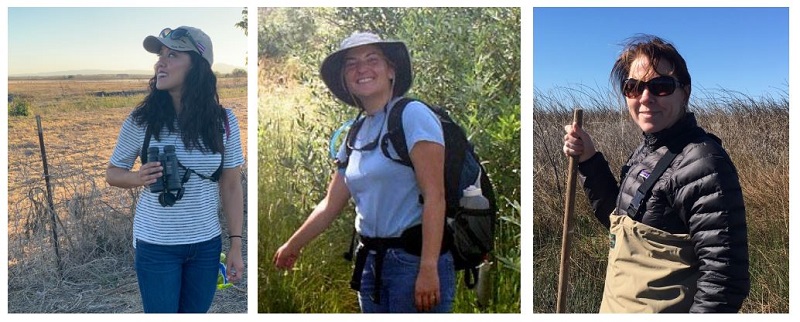
Launched in 2018, the California Biodiversity Initiative is a statewide effort to secure the future of California’s biodiversity. Such a large undertaking entails improving our understanding of California’s biodiversity, protecting and recovering California’s native species and ecosystems, and engaging participation by many partners. This talk will provide an overview of the California Biodiversity Initiative and the history of its development and will share initial efforts to implement the Initiative that are underway at California Department of Fish and Wildlife.
Kim Tenggardjaja joined CDFW in April 2019 as the Biodiversity Coordinator in the Science Institute and also serves as the lead coordinating staff for the California Landscape Conservation Partnership. Before this, she worked at the State Water Resources Control Board for several years, primarily focusing on seawater desalination and once-through cooling power plants. Kim has a PhD and MA in Ecology and Evolutionary Biology from UC Santa Cruz, where her dissertation research focused on marine biodiversity in the Hawaiian Islands.
Melanie Gogol-Prokurat is a Spatial Ecologist in the Biogeographic Data Branch, where she develops and analyzes landscape-level datasets to support decision-making in conservation planning. Melanie began her career with the Department in 2000, and has been with the Conservation Analysis Unit since 2009. She received her PhD in Conservation Ecology at UC Davis.
Martha Volkoff, Environmental Program Manager for the Habitat Conservation Planning Branch’s Invasive Species Program, has worked for the Department for 20 years, the past 11 of those in the Invasive Species Program. A native to the Sacramento area, Martha earned her BS and MS in Biology, with a Concentration in Conservation, from CSU Sacramento.
Date: Monday, December 9th Time: 1:00 - 3:00 p.m.
Location: 1416 9th Street, Room 1131, Sacramento (and via Skype)
Register to view online or in-person
Questions? Contact: Whitney Albright